Del, She/They (25), this is my sideblog for actual D&D/TTRPG rambling. If my players find this - no you didn't.
Last active 60 minutes ago
Don't wanna be here? Send us removal request.
Text
Random mansion generator

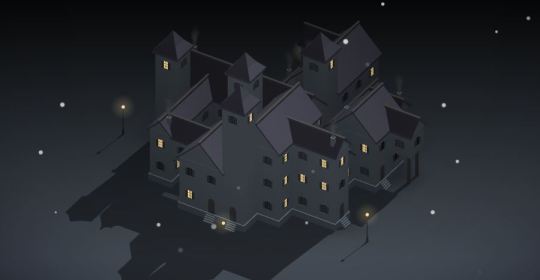
The Procgen Mansion Generator produces large three-dee dwellings to toy with your imagination, offering various architectural styles and other options. Each mansion even comes with floorplans:
https://boingboing.net/2019/07/12/random-mansion-generator.html
241K notes
·
View notes
Text

I cannot stop thinking about Ireena Kolyana, So here’s my take on her! I got super inspired after seeing @luckyblackcatxiii ‘s COS art, so you should maybe go look at it too, like right now
The party I'm DM-ing have just met her and Ismark and oh boy am I excited to see how this goes.
80 notes
·
View notes
Note
Hey Dapper! As an avid follower of- and equally avid inspiration-taker from your work, first of all, thank you for the work you've put into all this. It is a treasure-trove of knowledge and inspiration that has certainly made me very happy. Can I ask for your thoughts on Tharizdun? I've been trying to form a concept of it for in my own world, but I've had little success.
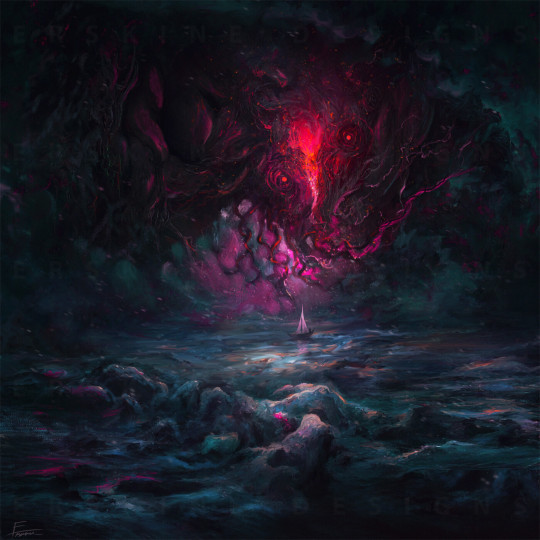
Monsters Reimagined: Tharizdun, the Whisperer in Darkness
Being the default "god of madness" Tharizdun brings together two of my enduring gripes with d&d: gods that no one would actually worship and the enduring legacy of depicting people with mental illness as dangerous lunatics devoid of empathy and reason.
As he currently exists in the DM's toolbox, the whole point of including Tharizdun in your campaign is to act as the powersource behind whichever final fantasy style endboss wants to start the apocalypse before unleashing a mass of offband lovecraftian tentacles. Derivative, trite, his singular desire to inspire others to end the world is MCU levels of failing to give villains proper motivations.
We can do better
TLDR: Far In the wildest depths of the astral sea the ur-god Tharizdun is formless and thoughtless, yet dreaming. Resembling nothing so much as a cosmic nebula of oily clouds, a vast and shapeless expanse of churning primordial chaos that pulses with synapses of psychic lighting containing a consciousness older than time itself. Like a sleeper beset with sleep paralysis the chained oblivion thrashes against a reality it can only barely perceive, sending shockwaves of destruction across the cosmos.
While scholars of all worlds debate the true origins and nature of Tharizdun they can agree on two things:
It is more powerful than all the pantheons of creation, and it is terrified.
Inspiration: I wasn't originally going to do a whole monsters reimagined on Tharizdun, instead simply gesturing on what Matt Mercer has done with the deity (using the roiling chaos as a throughline for much of his Exandrian worldbuilding) and leaving it at that.
Around the same time I got this ask though I was considering doing my own take on Azathoth, the so called "blind idiot god" of the lovecraft mythos, inspiration struck and I decided to alloy the two concepts into what I think is a stronger whole. There's a lot of overlap in the two formless horrors, partly due to Tharizdun being a d&d's attempt to dip its toe into eldritch horror, without quite understanding the thematic framework involved.
Like many other things ( Minorities, the sea, decay, air conditioning) Lovecraft was terrified of objective reality. This might sound like a joke, but fundamental to his mythos is the fear that earth and the white men that lived upon it were not the centre of the universe created by a loving god. Lovecraft lived in increasingly scientific times and the science supported the idea of a universe in which humanity's existence was the meaningless product of random chance. Azathoth was this anxiety embodied in its most extreme scale: the capital G god of the universe which sat in the middle of all creation that was not only uncaring towards humanity (as many of Lovecraft's creations were) but the embodiment of ultimate unthinking chaos.
Trying to port Azathoth (and most of the other lovecrafitan pantheon) doesn't work because the conceits of the genre fundamentally clash. D&D DOES propose a moral universe, and goes out of its way to simplify morality down to such a cartoonish level that it has objective answers. In Lovecraft the horror comes from the fact that the cultists and their fucked up alien gods exist, where as the moral christian god doesn't... in d&d there's no reason for the cultists to worship the fucked up alien gods because the regular gods are both existent and quite nice.
The default d&d cosmology has multiple infinite voids of chaos including limbo, the abyss, and the far realm. I've already given my take on one of these, but I wanted an alternative for the origins of the weird that wasn't specifically focused on entropic decay.
There's a fascinating (and very depressing) history over the term hysteria and the connotations of mental crisis with feminine fragility. The word itself comes from the greek word for womb and there's something about the idea of "primal birthing chaos" that's worth playing with insofar as it makes weird rightoids Jordan Peterson deeply afraid.
Taking these thoughts as well as my earlier gripes in mind, its going to take a bit of an overhaul to make Tharizdun/Azathoth as a credible antagonistic force for a campaign. Also, this might be my own bias as an author showing through here but I don't go in for the lovecrafitan "truths too terrible to be understood". I think the universe is a fundamentally knowable place and if things exist outside our means of perceiving them then we'll just bullrush through and work out a temporary explanation on our way.
Here's my Fix/Pitch: Both Tharizdun and Azathoth are supposed to represent primordial chaos and formless madness. D&D's less than stellar history with mental health issues aside, we know that "madness" isn't evil and it isn't the antithetical opposite of order: It's flawed reason, it's an inability to comprehend, and it's deeply scary for those going through it.
THAT ended up reminding me of a famous quote from lovecraft himself; "The oldest and strongest emotion of mankind is fear, and the oldest and strongest kind of fear is fear of the unknown".
What if we make THAT FEAR into the god? Imagine the panicked sensation of being woken from the deepest slumber by a sudden noise, the door opening or a loud bang going off somewhere on your street..... the phantom horror of something touching you, crawling over you in the middle of the night before you have any of your senses or reason or memory to tell you that it's just your partner or your pet or your own bed sheets. That's the stuff sleep paralysis is made of and it's been haunting us humans since the dawn of time. It's also the same horror of being born, of being a non-thing and then coming into existence in fits and starts without any understanding of the world that you're now
Now imagine there's something out there in the astral sea, the plane of dreams and thoughts... powerful beyond all imagining but created without the ability to ever fully wake up. It is stuck in that first moment of existence because it may well have been the first thing to ever exist and it's been trapped in the shapeless nightmare of an infant since the dawn of time
THAT is how you make a god about the horror of the unknown. A god that is antagonistic to us because it is sacred of us, and it is scared because it has no way of knowing us, knowing the reality it inhabits beyond its own fear.
Adventure Hooks:
The greatest threat Tharizdun presents to most beings in the universe is having a nightmare about them. Through the inexplicable paths of sleep an individual's mind may find themselves connected to the entity's own... receiving terrible visions as the thinking clouds of Tharizdun's body churn in a variable brainstorm. Some aspect of this communion will be twisted into something terrible, birthed into the cosmos with the same shrieking fear and confusion that inspired its creation. Some desperate few seek out this communion, thinking in their hubris that they can give shape to Tharizdun's creation, that the terror beyond time suffers collaborators or requests. (Yes, I'm yoinking the dream-spawning ability of beholders. They were already weird enough before they started getting involved with dream stuff)
Despite being a living entity, Tharizdun is also a place, a plane unto itself streaking through the multiverse like a collossal ameoba through the primordial soup. There are landscapes within the god, whole continents that form and erode through seasons of surreality as the paroxyc titan dreams them into being. One can create portals into these landscapes, even fly a jammership across them, but the act of doing so invites an even more chaotic backlash than visiting the chained oblivion in dreams, letting its terror leak out into the waking worlds.
The name "chained oblivion" dates back to an eon when forces of celestial order attempted to keep Tharizdun contained in the hopes of preventing the escape of its creations or its contact with other minds. This period of the multiverse oft refereed to as the "Time of Quiet" sadly came to an end when the entity's bindings were shattered by a collective of villains and horrors today refereed to as the "Court of Fools" or "Troupe of the Final Void". The Troupe are a motley bunch, unable to agree on a theology but all wanting to pick at the slumbering titan like it was a scab on the skin of heaven. Some serenade Tharzidun with cacophonous music, others hurl saints and sacrifices into its body, some worship or hunt the god's offspring while others stab it with cosmic pokers, just to get a reaction. They want to wake the chained oblivion and don't care how much of the multiverse they have to burn to do it.
Like a mollusc producing pearls as a means of containing an irritating bit of grit, Tharizdun's roiling cosmic body will occasionally spit out an entire world or strange demiplanes as a means of dislodging something it could not pallet. While this has been the genesis of many realms both beautiful and terrible throughout the astral timeline, of late all these worlds worth taking have been colonized by the Troupe. Woe and pity to any mortal who calls such a world home, ruled over by tyrants who care only for destruction, unaware of a cosmos not coloured by Tharizdun's wake.
Titles: The chained oblivion, the spiraling titan, sire of stars, the Paroxsmal god, Lord of all Hysterics.
Signs: Stormclouds that look oily and churn with otherworldly light, formless nightmares and pervasive sleep paralysis, mass delusion, darkness that echoes with the god's muttering and the sound of distant flutes.
Worshippers: Ad hoc worship of Tharizdun tends to congregate around those who have received unwanted visions of the chained oblivion, as the harrowing experiance often bestows those that suffer it with an otherworldy weight to their words, to say nothing of occasional psychic powers. Many abberations likewise pay heed to the chained oblivion, either for directly giving them life or for its great and insuppressable power. Among these include Grell who refer to Tharizdun as "storm mother", The nightmarish Quori follow in the wake of the god's psychic emanations and make up a large faction of the court of fools, and the Kaorti, terrifying mage-things remade by exposure to the spiralling titan's heart who claim to be heralds for the entity.
Art
391 notes
·
View notes
Text
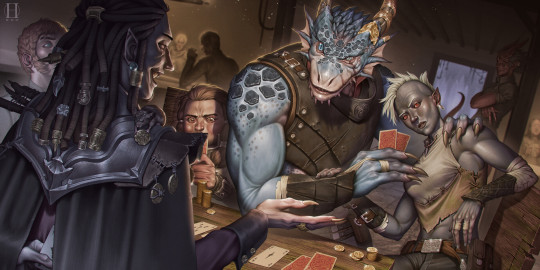
Dm Tip: Playing the Villain/ Guidelines for “Evil” Campaigns
I’ve never liked the idea of running an evil game, despite how often I’ve had people in my inbox asking how I’d go about it. I’m all about that zero-to-hero heroic fantasy not only because I’m a goodie twoshoes IRL but because the narrative-gameplay premise that d&d is built around falls apart if the party is a bunch of killhappy murder hobos. Not only would I get bored narrating such a game and indulging the sort of players who demands the freedom to kill and torture at will (I’ve had those before and they don’t get invited back to my table), but the whole conceit of a party falls through when the obviously villainous player characters face their first real decision point and attempt to kill eachother because cooperation is a thing that goodguys do.
Then I realized I was going about it all wrong.
The problem was I had started out playing d&d with assholes, those “murder and torture” clowns who wanted to play grand-theft-auto in the worlds I’d created and ignore the story in favour of seeing how much unchallenged chaos they could create. They set my expectations for what an evil campaign was, and I spent the rest of my time developing as a dungeonmaster thinking �� I Don’t want any part of that”
But what would an evil campaign look like for my playgroup of emotionally healthy friends who understand character nuance? What would I need to change about the fundamental conceit of d&d adventures to refocus the game on the badguys while still following a similar enough narrative-gameplay premise to a hero game? How do we make that sort of game relatable? What sort of power/play fantasy can we indulge in without going off the deepend?
TLDR: In an evil campaign your players aren’t playing the villains, they’re the MINIONS, they’re mooks, henchmen, goons, lackeys. They’re the disposable underlings of uncaring overseers who have nothing but ill intent towards them and the world at large.
Where as in a hero game the party is given the freedom to challenge and overthrow corrupt systems, in an evil game the party is suck as part of that corrupt system, forced to bend and compromise and sacrifice in order to survive. The fantasy is one of escaping that corrupt system, of biding your time just long enough to find an opening, find the right leverage, then tossing a molitov behind you on the way out.
Fundamentally it’s the fantasy of escaping a shitty job by bringing the whole company down and punching your asshole boss in the face for good measure.
Below the cut I’m going to get into more nuance about how to build these kinds of narratives, also feel free to check out my evil party tag for campaigns and adventures that fit with the theme.
Keep reading
458 notes
·
View notes
Text
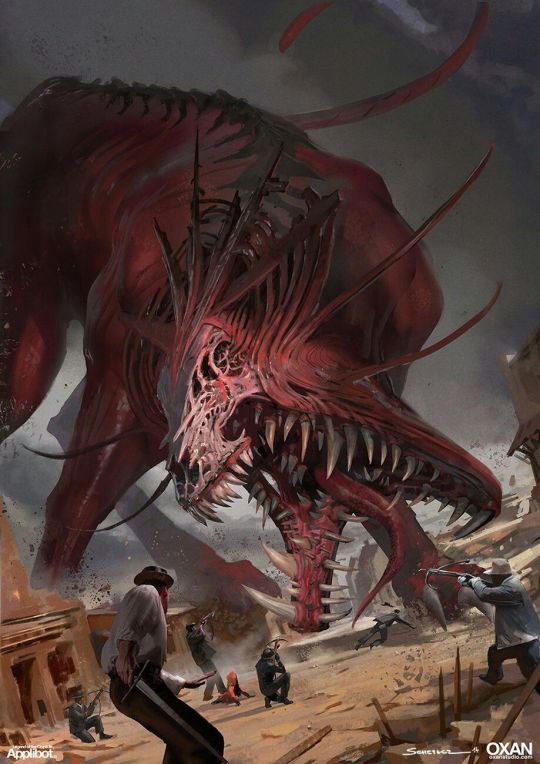
Monsters Reimagined: Yeenoghu, Demon Lord of Insatiable Hunger
It's been some years since I did my overhaul on the lore of the gnolls and how they embody the weird de/humanization that goes on with various monsters over d&d's history. Ever since I've had more than a few folks write in asking about how I would handle the default Gnoll God Yeenoghu, who exists in a similar state of "Kill everything that ever existed" to Orcus and a good portion of the game's other late game threats, thematically flat and not really useful for building stories around.
For a while I've avoided doing this post because I thought it might skew a little too close to my personal philosophy, and risk going from simply being influenced by my views to an outright soapbox. I personally hold that despite being part of our nature hunger is the source of the majority of human cruelty, and if society and cooperation are the tools we developed to best fight against the threat of famine, it is fear of that famine that allows the powerful to control society and secure their positions of privilege.
I've also dealt with disordered eating in a prior period of my life, alternating between neglecting my body's needs and punishing myself for needing in the first place. I'm well acquainted with hunger and the hollowing effect it can have, though I'd never claim to know it so well as someone who went hungry by anything other than choice and self hatred.
Learning to love food again saved saved my life. The joy of eating, of feeling whole and nourished, yes, but there was also the joy of making: of experimenting, improving, providing, being connected to a great tradition of cultivation which has guided our entire species.
If I was going to talk about an evil god of hunger, I was going to have to touch on all of that, and now that it's out in the open I can continue with a more thematic and narrative discussion on the beast of butchery below the cut.
What's wrong: Going by the default lore, there's not much that really separates Yeenoghu from any other chaotic evil mega-boss. He wants to kill everything in vicious ways, and encourages his followers to do the same. He's there so that the evil clerics can have someone to pray to because the objectively good gods are on the party's side and wouldn't help a bunch of cannibalistic slavers.
This is boring, we've done this song and dance before, and the only reason that there are so many demon lords/evil gods/archdevils like this is because the bioessentialism baked into the older editions of the game's lore was also a theological essentialism, and that every group had to have their own gods which perfectly embodied their ethos and there was no crossover whatsoever, themes be damned.
Normally I'd do a whole section about "what can be salvaged" from an old concept, but we're scraping the bottom of the barrel right from the inset. Likewise my trick of combining multiple bits of underwritten d&d mythology to make a sturdier concept isn't going to work as most of d&d's other gods of hunger or famine are similar levels of paper thin.
How do we fix it: I want Yeenoghu to be the opposite of the path I found myself on, a hunger so great and so painful that it percludes happiness, cooperation, or even rational thought. Hunger not as a sumptuous hedonistic gluttony but a hollowing emptiness that compels violence and desperation. More than just psychopathic slaughter and gore, it is becalmed sailors drinking seawater to quench their thirst, the urban poor mixing sawdust and plaster into their food because their wages are not enough to afford grain.
This is where we get the idea of Yeenoghu as an enemy of society, not because violence is antithical to society ( I think we've learned by now how structured violence can really be) but because society fundamentally breaks down when it can't take care of the people who provide its foundations. Contrast the Beast of Butchery with one of my other favourite villainous famine spirits: Caracalla the grim trader, who embodies scarcity as a form of profit and control in to Yeenoghu's scarcity as suffering.
Into this we can also add the idea of the hungry dead, ghouls yes but also vampires, anything cursed with an eternal existence and appetites it no longer has the ability to sate. A large number of cultures across the world share the idea that the dead cannot rest while they are starving, which is why we leave offerings of food by their graves or pour out a glass to the ones we lost along the way.
On that topic, there's also a scrap of lore involving Doresain god of ghouls, who has been depicted as an on and off servant of Yeenoghu. Since I'm already remaking the mythology, I'd have Doresain act as a sort of saint or herald for the demon lord, the wicked but still partially reasonable entity who can villain monolog before the feral and all consuming demon god shows up.
Summing it all up: Yeenoghu isn't a demon you wittingly worship, it's a demon that claims you, marks you as its mouthpiece and through you seeks to consume more of the world. It gives you just enough strength to keep on living, keep on suffering, keep on filling that hole in your belly and feed it in turn.
The greatest of these mouthpieces is Doresain, an elf of ancient times who's unearthly hungers elevated him to demigod status. Known as the knawbone king, he dwells within a dread domain of the shadowfell, and is sought out only for his ability to intercede with the maw-fiend's rampages.
Signs: Unnaturally persistent hunger pangs, excessive drool and gurgling stomach noises, the growth of extra teeth in the mouth, stomachs splitting open into mouths.
Symbols: An animal with three jaws, a three tailed flail or spiked whip. A crown of knawed bones (Doresain)
Titles: Beast of butchery, the maw fiend, the knawing god
Artist
586 notes
·
View notes
Text

Sketchbook - Zybilna
Tasha or Natasha also known as Iggwilv from Greyhawk. Her Goddess/Archfae Form, Zybilna.
For Edward Dreier as a part of Patreon Rewards.
38 notes
·
View notes
Text

BEHOLD!
Curse of Strahd as the poster (inspired by the poster of Rocky Horror Picture Show)
The classics should be KNOWN!
#artists on tumblr#curse of strahd#dnd5e#dnd#dungeons and dragons#strahd#strahd von zarovich#d&d(ee)
418 notes
·
View notes
Text
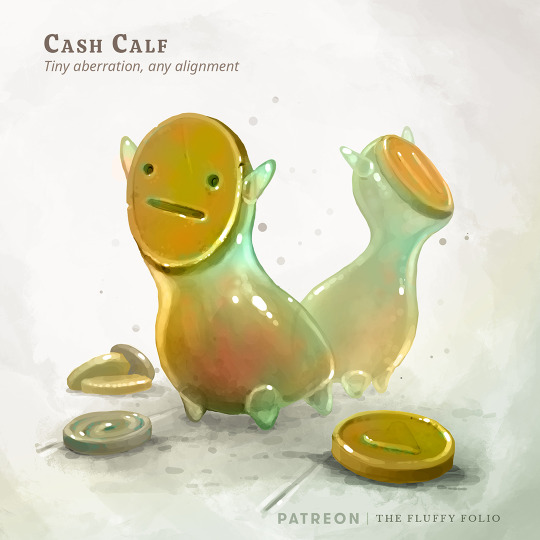
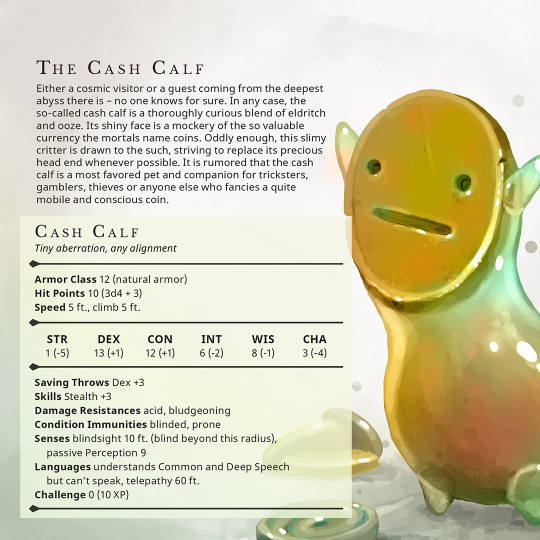

Cash Calf – Tiny aberration, any alignment
Either a cosmic visitor or a guest coming from the deepest abyss there is – no one knows for sure. In any case, the so-called cash calf is a thoroughly curious blend of eldritch and ooze. Its shiny face is a mockery of the so valuable currency the mortals name coins. Oddly enough, this slimy critter is drawn to the such, striving to replace its precious head end whenever possible. It is rumored that the cash calf is a most favored pet and companion for tricksters, gamblers, thieves or anyone else who fancies a quite mobile and conscious coin.
🔮 If you like my work, kindly consider to support me on Patreon to gain access to monster pages, tokens & artwork of over 250 quirky creatures as well as dozens of potion & item cards based on their lore.
361 notes
·
View notes
Text
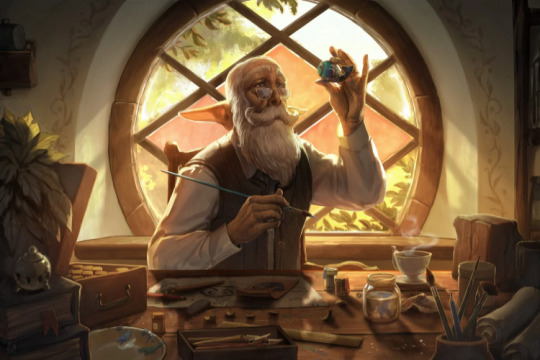
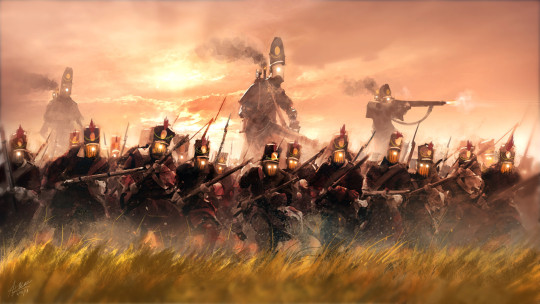
Villain: The Gleebringer Battalions
Gallard Gleebringer only ever wanted to make people happy. By using his skills as a toymaker and inventor he sought to fill the world with devices that would bring wonder, and save people from the drugery of labor to give them more time for play.
Seeking to save his neighbours from the horrors of war, and under the patronage of the battlehungry local margrave, Gallard has a constructed an autonomous army of toy soldiers that in some weeks time will go berserk and begin rampaging across the land, playing out an inexplicable war-game that will leave villages sacked and the entire region destabilized.
It’s up to the party to notice the looming crisis and do something about it before the toys begin their march, As the powers that be are not only blind to the looming crisis but actively dismissive of any
Adventure Hooks:
Scraping together enough coin to fund a construct army has left the margrave’s treasury more than a little tight pursed, leading them to skimp on things like repairing infrastructure, public festivals, and resupplying their garrisons. There’s plenty of opportunities for adventurers as bandits and monsters propagate through the wilderness, and the lesser nobles rely on mercenaries to guard their holdings. Its only so long before the cracks begin to show however, as roads wash out and the realms defenders turn to brigandry.
The party end up in a tavern drinking with an old military officer previously employed by the margrave. She’s iresome and illtempered, but she’ll crawl out of her cups long enough to tell the tale of how after twenty years of loyal service she was let go for protesting when some of the troops under her command were killed in a training exercise. If the party press a little she might just let it slip that it wasn’t training so much as a field test of Gleebringer’s machines, which her boss insisted be against real troops. Later on, they’ll find an official bounty posted for the woman, who’s rallied some of her fellow discontented soldiers and started on a campaign of sabotage.
For his part Gleebringer is quite blind to the looming threat, having been carried by his ever shifting attention to yet another new project once the design and manufacture of the armies were complete. The party might get a chance to talk to him however if they manage to sneak into the excursive exposition he's hosting in the province's capital, either by riding in on the coattails of a wealthy patron, or by sneaking in among the serving staff. Actually getting an audience with the toymaker will be even more difficult as the margrave has set his agents to watch and protect Gleebringer, and it's only so long before they notice the uninvited guest have crashed the private function.
Setup: While many gnomes dabble in artifice, it was early in his apprenticeship with the village toymaker that a young Gallard discovered both his love and prodigious talent for the technical arts. It wasn't just a magical knack, it was an eye for detail that had people saying that the gnome's creations seemed to be alive long before he figured out how to make them move on their own.
Soon Gleebringer toys were in demand across kingdoms, and Gallard found himself not only patronized by innumerable wealthy merchants and nobles but sought out by engineers and craftsfolk of all kinds who realized the genius packed away in his creations.
Gallard didn't let the fame or the fortune go to his head, instead using his growing connections and commission budget to experiment with even more complex designs. For example: scaling up from music boxes to clockwork bands, and eventually an automated opera house.
As a man who dreamed all his life of building a flying town, it was safe to assume that Gallard had his head in the clouds. He hated to see people suffer but seldom thought through the implications of his inventions, Such as when an automated lumber mill intended to supply materials for his projects put an entire town of foresters out of work. This penchant for distraction was only encouraged by the margrave, who saw the military applications of Gleebringer's gifts from the moment a clockwork dragon bought for one of his children ended up badly maiming one of the servants who saught to tidy up the toyblock castle it had been charged with guarding.
Over the past ten years, the Margrave has become Gallard's most generous patron, supplying him with workshops ( staffed by apprentaces who's loyalty can be counted on) and an endless series of new projects ( which always end up increasing the margrave's power and standing at the cost of the common good).
Art 1
Art 2
251 notes
·
View notes
Text

We have gotten some strong hints that Ireena is going to be a wild magic sorceress! I gave her a more adventurey outfit to match!
110 notes
·
View notes
Photo
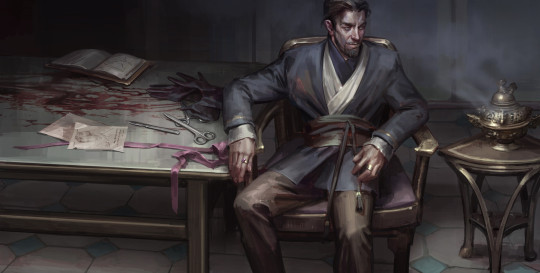
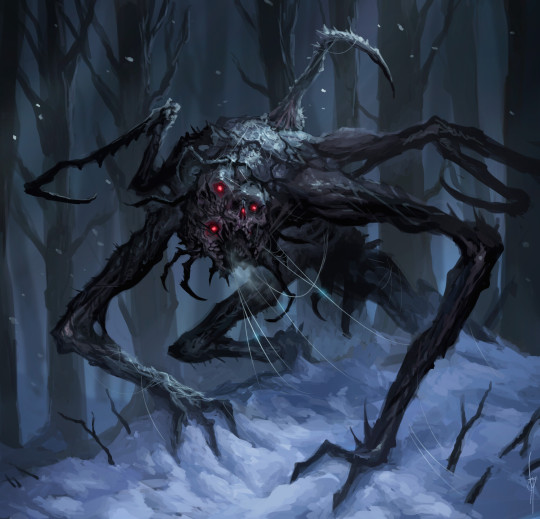
Villain: Lord Idric Lenzalla , Threadpuller
Oh what a Tangled Web he weaves
Setup: A penniless footman moves to town after inheriting his grandmother’s cottage, disgraced and socially ruined after being caught nicking the silverware. Looking for things to sell among the clutter of his new domicile he ends up stumbling across his grandmother’s loom and in the process of repairing and cleaning it he feels drawn to see if it still works. He works through the night and awakens in the morning to find that not only has he produced a tapestry summing up the events of his life, the most recent edge of it shows him being hired to work among the local lord’s staff and Lo and behold the tapestry has come true, granting the footman second chance at life. Or he would have, if he hadn’t been rejected after propositioning a maid servant and he began to think what else he might be able to change with the miraculous loom, at which point the contraption breaks just as Idric is weaving in his encounter with the maidservant and no matter what part he tries the loom will not be fixed, forcing him to live with his mistake half mended.
That is until a week or two later when he finds a dead cat in his yard, a bone protruding from its body that looks like it would be a perfect fit for the loom’s mechanisms. Thus we begin Idric’s decent into darkness, as he seeks to undo each new hiccup in his life, and each time requiring a greater and more grisly sacrifice. Salvaging dead animals turns to poisoning his neighbor’s pets and butchering their livestock, which leads to graverobbing as Idric vies for a promotion in his lord’s house to head valet. It’s not until he’s sitting down with a fellow servant, an concomitant bumbler and tattle that always made more work for him, that Idric got a sense that the man’s restlessly bouncing thigh would make a great replacement for one of the loom’s treadles that had just given out, and that he should invite the sot over for tea some time and show him his grandmother’s pride and joy.
The hand of Lolth is at work in Idric’s life, having sighted in the young man a seed of ambition and cruelty that she hopes to nurture into true monstrosity. Each time he uses the loom to enact his fantasies, going so far as to unweave events of his life to ensure other events later down the line, Idric lets more of the lie-weaver’s influence in, as represented by more and more spider imagry entering the tapestry over time.
Hooks:
The party is drawn to town by a request from Halthorn, the local lord, as the rumors of rampant deaths have spread along the trade road, and now the whole settlement is in need of some heroes to help solve the matter. When the party get to town however they discover they are in the company of one lord Lenzalla, who doesn’t remember inviting any sellswords to his court but will gladly sup with them before sending them on their way. In the fortnight since Halthorn dispatched the message Idric’s ambition and jealousy grew great enough to weave himself in his employer’s place, taking both his pretty wife and his estate for his own. Hearing tell of the party’s adventures over dinner however will give lord Lenzalla an idea: there’s an old ruin in the forest nearby, what if he weaved a fabulous treasure there and sent the party to find it, only after signing an agreement to split it fairly of course. Such an alteration will require several days of effort and the lives of three of his subjects, but he’s been stockpiling them in his dungeon for just such an occasion.
No matter what Idric says, there’s still a killer on the loose and the party’s stay on his estate and in town will give them a chance to question the locals about the killings and the mysterious missing lord Halthron. As it turns out, editing him out of everyone’s recollection didn’t stop them from noticing all the murders he performed in order to work his enchantment, or the old lord from actually existing, as he now dwells in a cluttered cottage (once belonging to an old weaver woman) as a memory addled hermit.
When Idric weaves, he sometimes feels as if he has multiple arms working in concert, as the spider queen works through him to create a false reality which adheres to his ambition’s design. The tapestry that serves as an anchor for this distortion now coils over itself, still affixed to the loom as it dominates an attic room the new lord Lenzalla has quardened off for his work. Should the Tapestry ever be damaged, Idric’s enchantments will begin to unravel, and should it ever be destroyed he will suffer a gruesome fate, transformed into a fateless creature all spiderlimbs and dead possibilities, which must be hunted before it can attempt to build a new loom from the corpses of innumerable victims.
The Raven Queen ( or other local god of Fate) will have quite a lot to say about Lolth playing around with such reckless causality, and will doubtless play a key role in snipping this loose thread through the use of omens and a few decisive interventions.
547 notes
·
View notes
Text
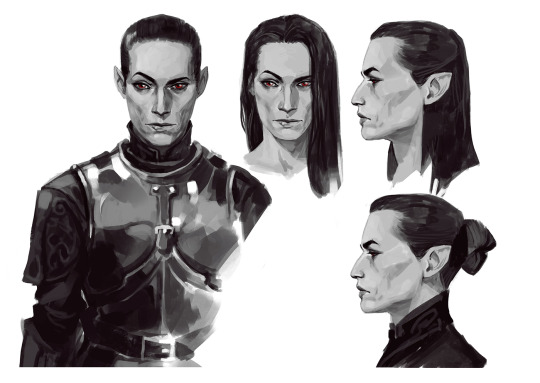
Sketching Lady Strahd from our She is the Ancient game (and going slightly feral ngl)
#strahd von zarovich#curse of strahd#she is the ancient#OH GOD COUGAR STRAHD#im so down bad#sappho save me
2K notes
·
View notes
Text

Doing warm-ups, name a D&D class and an animal!
16K notes
·
View notes
Text
Can't believe (can totally believe) I'm thinking about running Curse of Strahd again!
Unsurprisingly the prewritten module about Vampires has a fucking chokehold on me, especially since I got the 'She is the Ancient' supplement that genderbends the shit out of the module.
Get ready for some deeply tragic and decidedly unhealthy vampire lesbianism
3 notes
·
View notes
Text
When people draw Ireena (or any Tatyana) as a white woman like this art of two separate versions isn't in a published book

#ireena kolyana#tatyana federovna#Lyssa Von Zarovich#in every form she is evidently POC and people trying to pretend otherwise can fuck off.#all the very canon POC art of the tatyana incarnations are fucking beautiful as well why wouldn’t you love them???
34 notes
·
View notes
Text
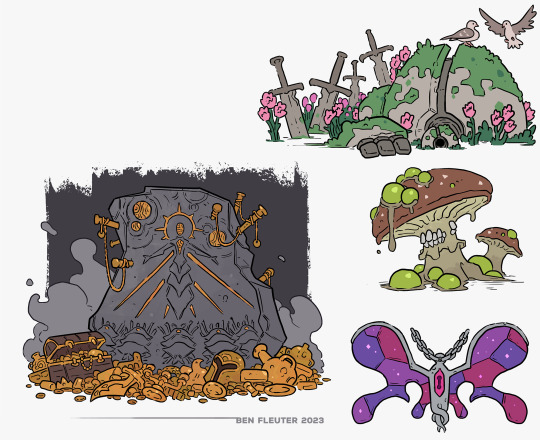

Art for @dm-tuz
2K notes
·
View notes